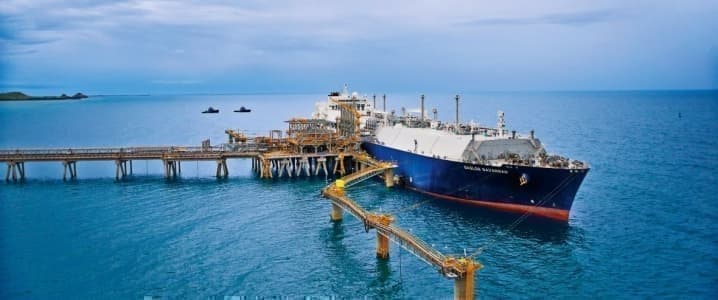A massive wave of investment has poured into LNG export terminals around the world in recent years, and nearly all of the projects have China at the center of their business plans. While China has been the largest source of LNG demand growth for quite some time, and will likely remain a key buyer going forward, Chinese demand may not be large enough for all of the LNG projects on the drawing board. More than a few LNG projects face investment risks as China balks at prices needed for many export terminals to make sense, according to a new report. The LNG market went into a tailspin this year due to the pandemic, but in reality, the global market for natural gas was heading into a downturn at the start of 2020, before the coronavirus led to widespread shutdowns. A substantial increase in export capacity in 2019 outpaced demand growth, pushing down prices. Against a weak backdrop, the pandemic-related demand destruction knee-capped the market, leading to LNG prices in Asia (JKM) to collapse below $3/MMBtu and even below $2/MMBtu for a period of time.
LNG has been the worst-performing commodity during the pandemic, trailing even crude oil and coal.
The pain of the LNG supply glut has been felt most acutely by U.S. exporters. The gas glut in Asia led to storage filling up in Europe, and ultimately the flexibility of American LNG translated into cancelled cargoes from the United States. Dozens of cargoes were cancelled in each of June, July and August.
Still, JKM prices have edged up and fewer U.S. cargoes are slated to be cancelled for September, perhaps a sign that the worst is over.
But hopes of a rebound in global LNG markets should be tempered. In the long-term, China may not absorb all of the gas that LNG developers expect. “A China-led rebound for the U.S. LNG industry will face stiff price resistance from Chinese buyers,” according to a new report from the Institute for Energy Economics and Financial Analysis (IEEFA).
The report did a deep dive into the Chinese market, and the authors found that Chinese importers were losing money on imported LNG. For example, PetroChina lost money on importing LNG every year between 2015 and 2019. The IEEFA analysis is not based on trade war concerns, but instead only focuses on the internal market in China.
China has expanding gas connections via pipeline from Central Asia, ample coal and renewable capacity, and it also has infrastructure constraints that prevents imported LNG from serving all parts of the domestic market. This limits the “long-term upside for a U.S. LNG boom,” wrote Clark Williams-Derry and Ghee Peh, authors of the IEEFA report.
Any expansion in LNG imports going forward would need to be done on the basis of import prices below $7/MMBtu. Anything above that threshold may not work out financially for Chinese companies, IEEFA found.
Related: Economic Turmoil Leaves Oil Trapped At $40
But here’s the problem. $7/MMBtu is likely to be too low for U.S. LNG exporters. The cost for LNG to arrive in Asia requires somewhere around $2/MMBtu for Henry Hub gas, plus $3/MMBtu for liquefaction, plus another $1/MMBtu for transportation. That means it roughly costs $6/MMBtu at a minimum to ship gas to Asia.
Complicating that equation is that Henry Hub is at unusually low levels, and certainly at unsustainably low levels if U.S. shale gas drillers ever want to make any money. So, Henry Hub will likely need to rise above $2/MMBtu. For instance, Goldman Sachs has repeatedly forecast U.S. natural gas prices in 2021 will exceed $3/MMBtu. On top of that, any increase in shipping costs would further negatively impact the equation.
That means that American gas may need to fetch well above $7/MMBtu in the long run if the trade is to be profitable. “Given recent U.S. gas feedstock and shipping costs, U.S. LNG imports barely price into the Chinese gas markets; and even modest increases in gas or shipping costs could render U.S. LNG imports entirely uneconomic,” the authors wrote.
These pricing dynamics don’t necessarily apply to existing facilities with contracts and sunk costs. But any new U.S. LNG export facility now faces significant investment risk. Indeed, new facilities are generally not built on spec; they require buyers to sign on before the FID is made. As a result, new U.S. LNG projects may not go forward.
A separate report from the Oxford Institute for Energy Studies (OIES) recently came to a similar conclusion. OIES said that because of the glut, buyers would balk at signing long-term contracts with rigid terms. “It is therefore clearly relevant to ask whether we should expect to see any new US LNG investment decisions being taken in the foreseeable future, especially with buyers not rushing to sign new long-term contracts,” OIES wrote in a July report.
ADVERTISEMENT
Many scenarios for American gas exporters bake in the assumption of an inexorable and unstoppable rise in Chinese gas demand – something along the lines of “if we build it, they will come.”
But “[b]ullish demand projections for LNG demand in China and Southeast Asia tend to ignore the price sensitivity of these markets, as well as the many logistical, economic, and political obstacles to the development of LNG and gas infrastructure,” the IEEFA analysts said. “The most optimistic LNG demand scenarios are simply unrecognizable to experienced analysts of the Chinese energy sector.”
By Nick Cunningham for Oilprice.com
More Top Reads From Oilprice.com:
- The World Is Facing A Solar Panel Waste Problem
- Why Iran And China Are Pushing Iraq To Boost Oil Production
- Oil Market Contango Returns In A Sign Of New Glut


















